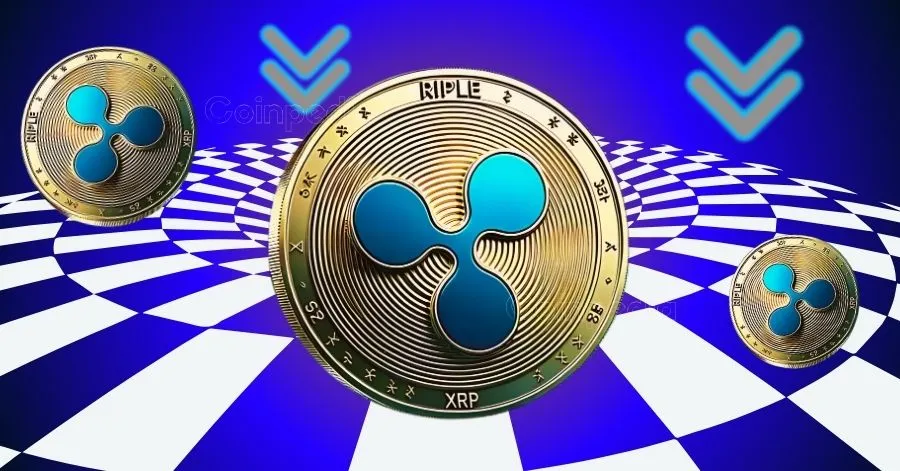The recent decline in XRP’s price has sparked concern and curiosity among investors and market watchers alike. This analysis aims to unravel the complex mix of factors driving XRP’s downward trend, dissect the technical and market dynamics at play, and offer insight into what the immediate future might hold for this prominent cryptocurrency.
Understanding the Current Price Decline
XRP’s price has seen a notable drop, ranging between 6% to 8% in recent 24-hour windows, falling to levels not witnessed since December. This downtrend is part of a broader market correction but is exacerbated by several specific catalysts:
– Massive Sell-Offs by Ripple Whales: Large holders or “whales” have offloaded approximately 370 million XRP coins over a short period, contributing to heightened selling pressure. This sell-off alone has driven the price down by as much as 16% within a few days.
– Market Liquidations and Broader Crypto Sell-Offs: The cryptocurrency market has endured liquidations exceeding $650 million in 24 hours, with Bitcoin, Ethereum, and XRP all experiencing sharp declines. Given XRP’s strong correlation with Bitcoin, declines in Bitcoin’s price have amplified XRP’s fall.
– Upcoming Token Unlocks: The scheduled monthly unlock of XRP tokens, releasing hundreds of millions of tokens into circulation, tends to flood the market with sellable supply, pressuring prices downward.
– Technical Rejections and Bearish Indicators: XRP’s failure to hold key support levels (around $2.30) and a breach below $3 in recent periods point to bearish divergence. Technical analysis reports exhibit signals that suggest the downtrend hasn’t fully exhausted, warning of potential further dips to levels around $1.96 or lower.
– Macroeconomic and Regulatory Pressures: Geopolitical factors like trade war fears, exemplified by tariff announcements impacting market sentiment, have indirectly pressured XRP’s valuation. Moreover, lingering uncertainty around Ripple’s legal battles with regulatory bodies persists in destabilizing investor confidence.
Market Dynamics and Technical Factors
The technical landscape leading to XRP’s decline is shaped by bearish divergence—where price actions contradict momentum indicators—alerting investors to a weakening bullish grip. Trading volumes have increased by over 10% at times during the sell-off, signaling an active but nervous market, despite the price drop.
XRP has been unable to sustain momentum above critical technical thresholds such as $2.28 and $2.30. Breaching these support points triggered stop-loss orders and further accelerated the decline. Analysts emphasize the significance of the $2 mark; dropping below it could open the path to deeper corrections.
At the same time, XRP’s trading volumes and transaction activity have diminished compared to prior periods, indicating a retreat in market participation or demand at higher price levels. This decline in transactional interest further undermines price support.
Impact of Broader Market Sentiment
XRP’s price trajectory is not insulated from the overall crypto market sentiment. Bitcoin and Ethereum’s more-than-3% declines exert downward gravitational pull on altcoins like XRP, which often mirrors broader trends due to intertwined investor sentiment and portfolio reallocations.
The recent drops in major stock indices like the S&P 500 and Nasdaq Composite, which retraced by roughly 2%, also reflect a risk-off mood in financial markets, discouraging speculative assets including cryptocurrencies.
Ripple Tokenomics and Investor Concerns
Ripple’s token emission schedule plays a vital role in XRP’s price behavior. The regular release of a significant number of tokens increases effective circulating supply, occasionally overwhelming demand and pushing prices down. Moreover, large token holders strategically selling XRP—whether institutional investors or Ripple’s internal parties—add layers of supply pressure.
This factor feeds into investor psychology; anticipation of major token unlocks often triggers preemptive selling to avoid holding depreciating assets, which perpetuates volatility.
Price Predictions and Recovery Outlook
Despite the sell-off, many technical analysts still regard XRP as fundamentally positioned for a bullish trajectory over the medium to long term. The recent corrections are often viewed as necessary retests of trendlines in a bull flag formation, which could set the foundation for renewed upward moves.
Some expert forecasts project XRP to recover to $3 or higher within the coming months, contingent on broader market conditions stabilizing and regulatory clarity improving. Conversely, failure to regain key support levels could drive the price below critical thresholds like $2, inviting deeper drops.
The notion of a rapid “crash” is tempered by XRP’s established market capitalization and liquidity, which tend to moderate extreme swings relative to smaller altcoins. Nonetheless, the immediate horizon involves navigating uncertainties—market sentiments, technical support levels, and macro factors all intermingle to shape price movements.
Summary: Balancing Caution with Potential
XRP’s recent price downturn is the product of a convergence of increased selling pressure from large holders, technical breakdowns, market-wide liquidations, and external economic concerns. Token unlock events and lingering regulatory questions compound these effects, leading to significant volatility.
Investors should weigh the current bearish signals against XRP’s fundamental prospects in global payments infrastructure and blockchain adoption. While technical setbacks introduce short-term caution, historical patterns suggest potential for eventual recovery should the market regain confidence.
The near-term outlook hinges on XRP’s ability to hold essential support around $2.20 to $2.30, broader cryptocurrency market sentiment, and resolution of key supply pressures. Those engaged in XRP trading or investment must remain alert to these factors and prepared for continued fluctuation, balancing risk with the token’s longer-term developmental narrative.




